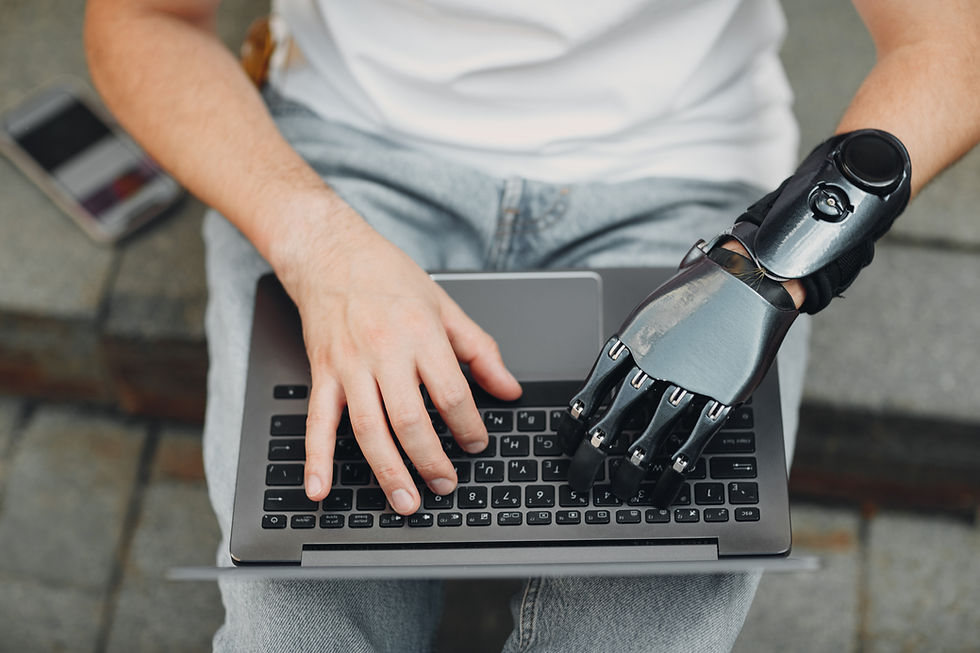The New Metrics: What AI Knows About Leadership Potential That 20 Years of Gut Feeling Never Told Us
- Claire Jin

- Jun 5
- 6 min read
How AI-driven insights are revolutionizing executive assessment for boards and CHROs
The Million-Dollar Gamble We Keep Making
Last year, Fortune 500 companies spent an average of $2.7 million replacing failed C-suite hires. The common thread in these expensive mistakes? "Great resume, impressive interview, felt like the right fit."
If this sounds familiar, you're not alone. Despite decades of refined hiring processes, 40% of senior executives still fail within 18 months. The culprit isn't bad intentions or lack of due diligence—it's the fundamental limitations of gut-feeling-based assessments in predicting executive success.
After two decades of watching brilliant resumes translate into mediocre performance, it's time to acknowledge an uncomfortable truth: traditional hiring methods are failing us when we need them most.

The Invisible Gaps in Traditional Assessment
Traditional executive hiring relies on a predictable playbook: impressive credentials, compelling interview presence, cultural "fit" assessments, and ultimately, the collective gut feeling of the hiring committee. Board members lean on their experience, CHROs trust their instincts, and everyone hopes the chemistry they felt in the room translates to boardroom performance.
But here's what traditional methods consistently miss:
Execution patterns under pressure. How does this leader actually perform when the quarterly numbers are off, the market shifts unexpectedly, or the transformation hits inevitable roadblocks? Interview scenarios can't replicate the cognitive load and emotional stress of real leadership crises.
Cultural agility beyond surface-level fit. Traditional assessments measure whether someone seems to "get" the culture during a structured conversation. They can't predict how that same person will navigate complex organizational dynamics, influence without authority, or adapt their leadership style across different stakeholder groups.
Tolerance for transformation cycles. Most senior hires today are brought in to drive change, yet traditional methods offer little insight into a candidate's genuine capacity to sustain energy through the inevitable frustration, setbacks, and ambiguity that define organizational transformation.
Decision-making architecture under uncertainty. We assess decision-making through hypothetical scenarios and past examples, but we can't predict how someone processes information, weighs trade-offs, and maintains decisiveness when facing genuinely novel challenges with incomplete data.
When AI Sees What We Can't
Consider this real scenario: A global technology company facing a critical digital transformation had two finalists for their Chief Operating Officer role.
Candidate A had everything boards typically love: prestigious background, charismatic presence, and unanimous enthusiasm from the interview panel. Previous roles included successful turnarounds at recognizable companies, and the cultural chemistry felt perfect.
Candidate B presented solid credentials without the marquee names, displayed quiet confidence rather than commanding presence, and generated mixed reactions from the hiring committee. Some found him "hard to read."
Traditional assessment methods pointed clearly toward Candidate A. But when the company ran both candidates through AI-driven behavioral and cognitive assessments, something interesting emerged.
The AI metrics flagged Candidate B for exceptionally high adaptability indicators, superior pattern recognition under stress, and decision-making frameworks that remained consistent even when facing contradictory stakeholder demands. Most critically, the assessment predicted his tolerance for "pivot pain"—the psychological and operational discomfort that accompanies rapid strategic shifts.
Candidate A, despite his impressive track record, showed predictive signals for decision fatigue under sustained uncertainty and a tendency toward consensus-seeking that could slow execution when speed was critical.
The company hired Candidate B. Eighteen months later, he had successfully navigated three major strategic pivots, maintained team cohesion through significant organizational restructuring, and delivered the transformation ahead of schedule. Candidate A, meanwhile, struggled in a similar role at another company, eventually departing after two years of missed milestones and team turnover.
The Predictive Intelligence Revolution
This isn't about replacing human judgment with algorithms. It's about giving human judgment access to patterns and insights that are invisible to traditional assessment methods.
Modern AI-driven assessment platforms can analyze communication patterns, decision-making frameworks, stress responses, and collaboration effectiveness across multiple scenarios and contexts. They identify behavioral consistencies that predict performance under specific organizational conditions—not just general leadership capability, but situational effectiveness.
The data supporting this approach is compelling. Organizations using AI-enhanced executive assessment report:
95% placement success rates compared to industry averages of 60%
50% faster decision-making processes (48-72 hours vs. weeks of deliberation)
40% better cultural alignment outcomes as measured by 360 feedback scores
60% reduction in mis-hire risk based on 18-month performance tracking
These aren't marginal improvements—they represent a fundamental shift in our ability to predict executive success.
What AI Actually Measures
Unlike traditional assessments that rely on self-reported examples and interview performance, AI-driven tools measure observable patterns across multiple dimensions:
Cognitive flexibility under pressure. How does decision-making quality change when facing contradictory information, tight deadlines, and high stakes? Traditional interviews can't replicate these conditions, but AI can analyze response patterns across simulated scenarios.
Influence and collaboration architecture. Rather than asking about teamwork, AI measures actual influence patterns, communication effectiveness across different stakeholder types, and the ability to drive alignment without formal authority.
Stress response and resilience patterns. Beyond asking about handling pressure, AI identifies physiological and behavioral indicators of stress tolerance, recovery patterns, and performance consistency under sustained challenge.
Strategic thinking and pattern recognition. AI can assess how executives process complex information, identify relevant patterns amid noise, and maintain strategic perspective while managing operational demands.
Cultural integration capacity. Instead of cultural "fit" assessments, AI measures adaptability to different organizational contexts, learning agility in new environments, and the ability to influence cultural change rather than simply adapt to existing norms.
The PREDICT Framework for Modern Executive Assessment
For boards and CHROs ready to move beyond gut-feeling hiring, here's a practical framework that integrates AI insights with human judgment:
Pattern Recognition: Use AI to identify behavioral consistency across different scenarios and contexts. Look for predictive indicators of performance under your specific organizational challenges, not just general leadership capability.
Risk Assessment: Implement systematic identification of potential failure points before they become expensive problems. AI can flag decision-making patterns, stress responses, and collaboration styles that historically correlate with derailment in similar roles.
Execution Mapping: Predict performance under the specific pressures your organization faces. If you're in transformation mode, assess transformation tolerance. If you're scaling rapidly, measure execution effectiveness without central control.
Decision Architecture: Analyze how candidates process information, weigh trade-offs, and maintain consistency under uncertainty. This goes beyond asking about decision-making—it measures actual decision-making frameworks.
Integration Capacity: Measure genuine cultural agility and alignment, not just surface-level fit. Assess the ability to influence and shape culture, not simply adapt to existing norms.
Cognitive Flexibility: Evaluate adaptation to change, learning agility, and the ability to pivot strategies without losing execution effectiveness.
Time-to-Impact: Predict ramp-up speed and effectiveness in your specific context. Different organizations and situations require different acceleration patterns.
The Strategic Imperative
The question facing boards and CHROs isn't whether AI will transform executive hiring—it's whether your organization will be among the early adopters who gain competitive advantage or among the late adopters who continue subsidizing expensive hiring mistakes.
In an environment where the cost of executive mis-hires continues rising and the complexity of leadership roles continues increasing, the organizations that combine human wisdom with predictive intelligence will consistently out-execute those relying on traditional methods alone.
The most successful companies aren't replacing human judgment with AI—they're enhancing human judgment with data that actually predicts success. They're moving from hoping their executives will succeed to knowing they will succeed before making the investment.
For CHROs and board members who have watched too many "sure thing" hires become expensive lessons, AI-driven assessment isn't just an upgrade—it's a strategic necessity. The data is clear, the technology is proven, and the competitive advantage is available to organizations ready to embrace predictive hiring intelligence.
The only question remaining is whether you'll continue betting millions on gut feeling or start using data that predicts success.
Ready to Experience Predictive Intelligence?
If you're curious to see how AI metrics would evaluate your current leadership pipeline compared to traditional methods, we're offering personalized diagnostic sessions for boards and CHROs. These 30-minute conversations focus on data, not sales pitches—showing exactly what predictive intelligence reveals about leadership potential in your specific context.
The session costs nothing except your time, but could save your organization millions in mis-hire prevention and accelerated leadership impact.
Contact us to schedule your leadership intelligence diagnostic and see what 20 years of gut feeling never told you about your next executive hire.
Executive intelligence isn't about replacing human judgment—it's about arming it with data that actually predicts success.




Comments